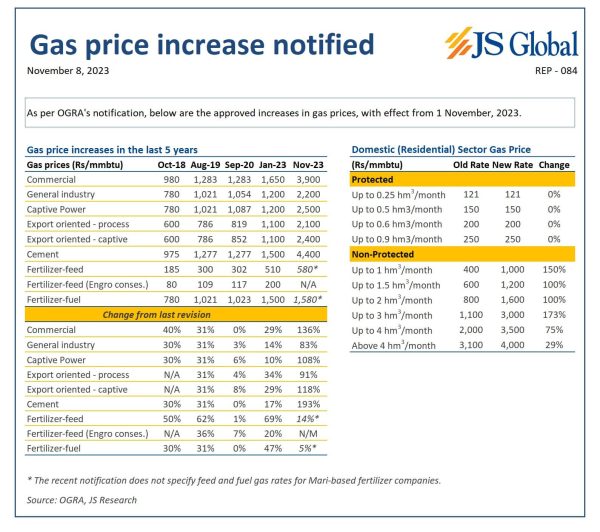
The Oil and Gas Regulatory Authority (OGRA) has announced a substantial increase in gas tariffs to meet the International Monetary Fund (IMF) requirements.
According to the official announcement by OGRA, the increment reaches 172 percent for domestic consumers, with these prices set to be implemented starting from November 1.
The fixed monthly charges for protected domestic consumers have witnessed a substantial surge of 3900 percent, escalating from Rs.10 to Rs. 400.
New Pricing Structure for Domestic Consumers
Protected and Non-Protected Categories: One of the key changes in the new pricing structure is related to domestic consumers, which are categorized into protected and non-protected categories:
Protected Category Consumers: Domestic consumers falling under the protected category will now pay a fixed monthly charge of Rs. 400. This rate aims to provide affordability and stability to a significant portion of households.
Non-Protected Category Consumers (up to 1.5 hm3): Non-protected category consumers with gas consumption up to 1.5 hm3 will be subject to a fixed monthly charge of Rs. 1,000. This ensures that those using natural gas for household needs continue to have reasonable access.
Non-Protected Category Consumers (exceeding 1.5 hm3): For consumers exceeding consumption of 1.5 hm3, the monthly charge will be set at Rs. 2,000. This higher rate is designed to account for the increased consumption levels of certain households.
How Will This Substantial Increase Affect Consumers?
Higher Utility Bills: Consumers will face increased monthly utility bills, putting additional financial strain on households.
Reduced Disposable Income: The extra expenses on gas can limit disposable income, impacting spending on other necessities and discretionary items.
Rising Cost of Living: An overall increase in the cost of living as transportation and production costs surge due to higher gas prices.
Energy Conservation: Consumers may opt for energy-efficient appliances and practices to mitigate higher bills.
Economic Stress: Vulnerable populations may experience heightened economic stress, potentially requiring government assistance.


